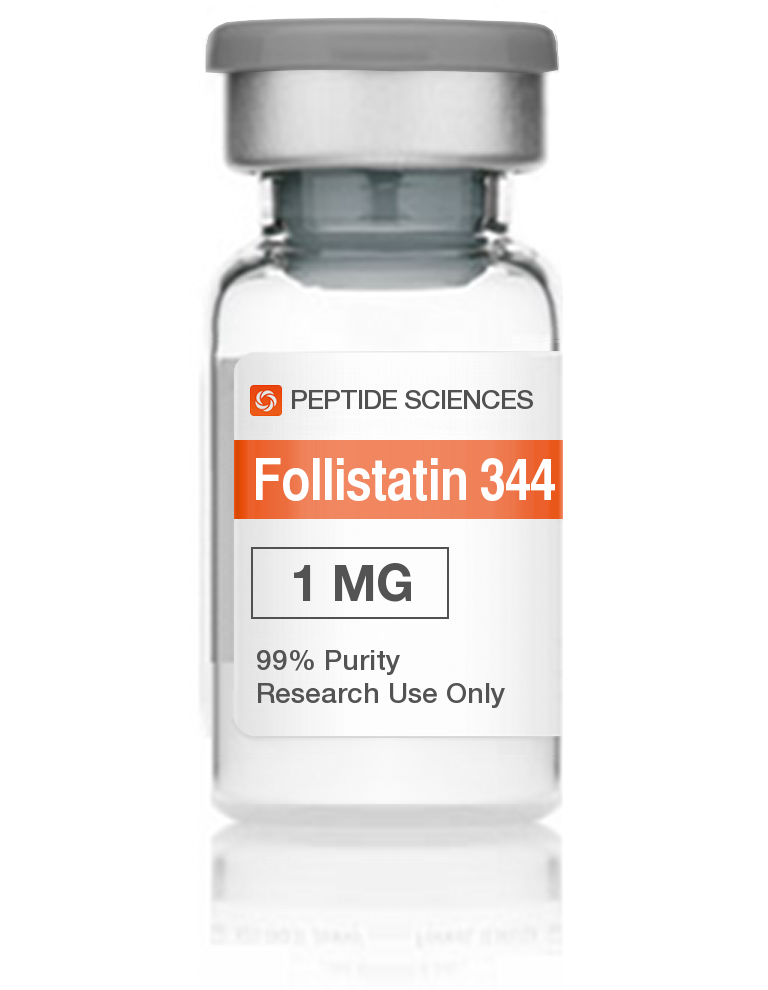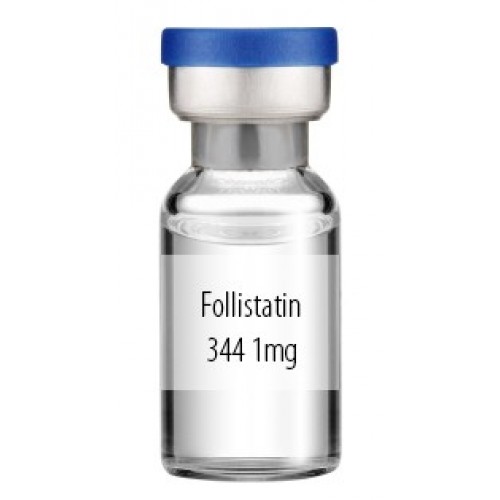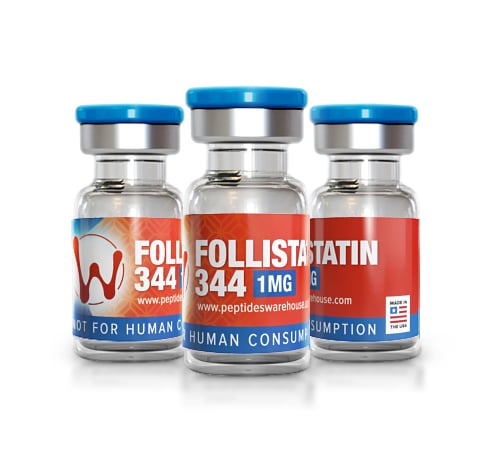Follistatin 315 1mg USA
Follistatin, also known as an activin-binding protein, is a protein that buy follistatin is encoded in the human by the FST gene. Follistatin is an autocrine glycoprotein that is expressed in almost all tissues of higher animal organisms. The main function of Follistatin is the binding and bio-neutralization of members of the superfamily TGF-beta, with a special emphasis on activin, paracrine hormone.
Previously, the protein was called FSH, an inhibitory protein. With the initial isolation from the follicular fluid, it was found that the substance inhibits the secretion of follicle-stimulating hormone (FSH) in the anterior pituitary gland. Follistatin suppresses the messenger protein in the body, one of which is myostatin; suppressing myostatin inhibition of protein synthesis, follistatin may increase muscle mass.
Pharmacological group: peptides
Basic information
Follistatin is a negative regulatory protein. It regulates the body by suppressing the actions of other proteins and hormones. With excessive expression, it can cause excessive suppression of these proteins. One such protein, myostatin, is itself a negative buy follistatin regulator of protein synthesis in muscles.
Therefore, increasing the expression of follistatin indirectly promotes the synthesis of protein in muscles, as if removing the blockage from protein synthesis. An overdose of follicatin (usually through injections) mimics the deficiency of myostatin, which is otherwise called “muscle hypertrophy” and is observed in Belgian blue cows. Forstallin also has an effect on reproductive function, can exert its influence by suppressing proteins (not myostatin), which are called activins.
Structure and purpose
Follistatin – glycosylated protein in blood plasma, has the ability to suppress follicle-stimulating hormone (FSH). Included in the superfamily of proteins of the Transforming Growth Factor Beta-1 (TGF-b). Follistatin is probably able to form bonds with proteins and inactivate them, preventing the effect of proteins on receptors. Similar is observed with:
-
Myostatin
-
GDF11
-
Activin
Myostatin is a prototype of the negative regulator of muscle mass, GDF11 does not regulate muscle mass, but takes part in the regulation of the buy follistatin skeleton and kidneys, and the akivins besides the regulation of muscle mass show pleiotropic effects on many other organs, for example, the brain and the ovaries. Increased levels of follicatin may cause a decrease in the activity of the above proteins.
Biochemistry
Follistatin is part of the axis of inhibin-activin-follistatin. At present, three isoforms of follicatin are known – FS-288, FS-300 and FS-315. Two of them, FS-288 and FS-315, were created as a result of alternative splicing of the primary mRNA transcript. FS-300 (porcine phallistatin) is considered the product of a post-translational modification, produced by truncation of the C-terminal domain of the 
The actinin-binding protein follistatin is produced by foliculostellate (FS) cells of the anterior lobe of the pituitary gland. FS cells have numerous contacts with classical endocrine cells of the anterior lobe of the pituitary gland, including those with gonandotropins. Actinin plays an important role in the cellular proliferation of tissues. Follistatin thus serves as a shield against buy follistatin uncontrolled cell proliferation, as well as a tool for cell differentiation. Both processes play a vital role in tissue repair, and depend on the high presence of follistatin in the skin. In the blood, activin and follistatin are involved in an inflammatory reaction after tissue damage or pathogenic invasion.
The source of follistatin in the circulating blood plasma has not yet been determined, but from its autocrine nature it follows that the endothelial cells lining all the blood vessels or the sources of follistatin may be macrophages and monocytes also circulating in the bloodstream. Follistatin plays an important role in the development of the embryo. It exerts a depressing effect on the morphogenetic proteins of the bone; morphogenetic proteins of the bone transform the ectoderm into the epidermal ectoderm. Inhibition of bone morphogenetic proteins allows the neuroectoderm to arise from the ectoderm, and as a result of this process, a nerve plate eventually forms. Other inhibitors involved in this process are the noggin and chordin. Follistatin and bone morphogenetic proteins are known to play an important role in ovarian folliculogenesis.
The main role of follicatin in menstruation is the development of follicles and the cellular differentiation of granular cells that produce estrogen from the dominant follicle and large lutein cells that produce progesterone in the yellow body. and as a result of this process, a nerve plate eventually forms. Other inhibitors involved in this process are the noggin and chordin. Follistatin and bone morphogenetic proteins are known to play an important role in ovarian folliculogenesis.
The main role of follicatin in menstruation is the development of follicles and the cellular differentiation of granular cells that produce estrogen from the dominant follicle and large lutein cells that produce progesterone in the yellow body. and as a result of this process, a nerve plate eventually forms. Other inhibitors involved in this process are the noggin and chordin. Follistatin and bone morphogenetic proteins are known to play an important buy follistatin role in ovarian folliculogenesis. The main role of follicatin in menstruation is the development of follicles and the cellular differentiation of granular cells that produce estrogen from the dominant follicle and large lutein cells that produce progesterone in the yellow body.
Clinical significance
The role of follicatin in the regulation of muscle growth in mice is studied as a myostatin antagonist (also known as GDF-8, a member of the TGF superfamily) that suppresses excessive muscle growth. Lee and McPherron have shown that inhibition of GDF-8 by genetic elimination or by increasing the amount of follistatin leads to a significant increase in muscle mass. In 2009, a macaque study found that regulating follistatin with gene therapy also leads to muscle growth and increased strength. This study opens the way for clinical trials on humans, the beginning of which was planned for the summer of 2010.
The study also showed that increased levels of follistatin, leading to an increase in muscle mass in some major muscle groups, can increase life expectancy in cases of spinal muscular atrophy (SMA) in animals. In addition, the drug was studied to identify its role in the development of the syndrome of polycystic ovaries (PCOS). There is still debate about his immediate role buy follistatin in the development of this disease associated with infertility.
Influence on reproductive function
Women
Although follistatin has an effect on reproductive function, its level does not change during different phases of the menstrual cycle, nor during the entire reproductive age. Follistatin expression declines during menopause, but increases with hormone replacement therapy.
Men’s
There is a high concentration of follistatin in the seminal fluid, while the concentration does not depend on the state of fertility.
Effect on the composition of the body
Hypertrophy
Follistatin is able to block myostatin signals. Myostatin is a negative regulator (suppressor) of protein synthesis in muscles, therefore inhibition of negative regulation promotes the acceleration of the synthesis of muscle protein. A study in mice demonstrated that taking a drug containing follistatin increases muscle growth for a long time. Follistatin acts by inhibiting myostatin, but it is also likely to 
Research of hypertrophy
In models of mice with follistatin peptides (creates selectivity of myostatin over other activins), there is an increase in muscle mass and a decrease in fat mass with small adipocytes. Myostatin deficiency caused by follistatin or genetic knockout leads to an buy follistatin inability to accumulate excess fat. genetic effect on myostatin (used as a model of myostatin deficiency) leads to muscle growth in some species, for example in mice, livestock, dogs, sheep, and also in a case study of genetic abnormalities in humans. With gene transfer, a 20% reduction in the effect of myostatin results in a significant increase in muscle mass in primates.
Physical exercises
In women during the menopause, the level of mRNA of follistatin is increased 2.1 times as a result of eccentric exercises and 5.8 times as a result of hormone replacement therapy. After 24 hours after eccentric exercise, the level of mRNA is not significantly different from the basal level. In healthy males, cardiovascular exercise for 3 hours at 50% VO2 max or intermittent eccentric activity (weightlifting) increases the activity of follicatin by 7 times. But the increase is noted after 5-6 hours after the exercises, and not in the process. Probably, follistatin is formed in the liver, buy follistatin and not in the muscles; the mouse model with a 21.5-fold increase in the mRNA of follicatin was found to support this.














